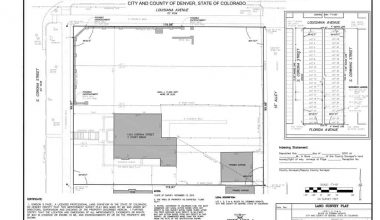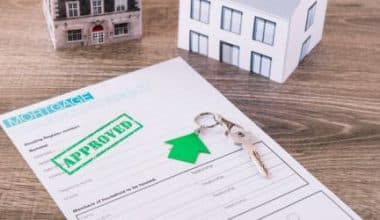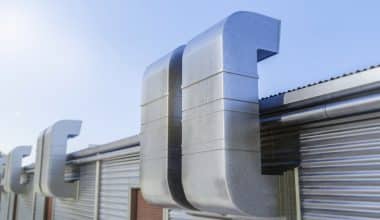The capitalization rate has been an influence in the real estate sector, in the sense that a higher capitalization rate is indicative of higher risk on the real estate property, and a lower cap rate is indicative of a lower risk on the real estate property. It also has an inverse relationship with the cost of the property. The capitalization rate formula and rental property capitalization rate are discussed in this post.
A more expensive property always tends to have a lower capitalization rate while a less expensive property will have a higher cap rate. Let’s take a look at what we mean.
What is the capitalization rate?
A capitalization rate is defined in real estate as an indicator used to indicate the rate of return expected to be generated on a real estate investment property.
The cap rate predicts a property’s net income. Divide the property’s net operating income by its asset value. It gives a rough estimate of a real estate investor’s profit.
The capitalization rate helps evaluate similar real estate investments on the market. It’s not the only way to judge an investment’s strength. Among other things, the cap rate doesn’t consider leverage, time value of money, or future cash flows from property upgrades.
The capitalization rate is calculated as the ratio between the yearly rental income produced by a real estate investment and its current market value. It also depends on annual revenue, gross or net rental income, and whether rental income is the exact amount received or the amount that may be collected if the property is rented.
Capitalization Rate Formula
You can calculate the capitalization rate with a simple formula shown below:
Capitalization Rate=(annual net operating income)/(current market value)
Let’s break down each term in the capitalization rate formula mentioned above;
Annual Net Operating Income (NOI)
Annual net operating income is the calculation used to analyze the annual profitability of income-generating real estate properties.
This equals all the revenue from the property generated in a year, minus all necessary operating costs.
NOI is a figure that is calculated before tax. It appears in a real estate property’s income and cash flow statement. It excludes principal and interest payments on loans, depreciation, and capital expenditures.
To calculate NOI, subtract all operating costs accrued in the course of running a property within a year, from all revenue generated on the real estate property.
To calculate ANOI and account for occupancy rates below 100% while calculating the capitalization rate, use this formula:
Annual Net Operating Income = {(Gross Income) * (Occupancy Rate)} – (Operating Expenses)
Current Market Value
Current market value is the price a willing buyer would pay a willing seller in an open market, factoring in supply and demand. It’s the property’s open-market worth.
The property’s current market value is determined by examining its attributes, discovering similar sales, and comparing its features to its sold price. Adjust the property value (the sold price is not the same as the listing price), and average the property totals.
Mathematically, you can calculate the current market value by dividing the property’s net operating income by the property’s cap rate.
NOTE:
The market cap can also be calculated with a different formula. This other is required or used only if the market value is unknown. The equation or formula is, however, based on historical risky premiums. The formula is as shown below
Capitalization rate =
(risk rate + historical real estate premium – expected net operating income growth)
Divided by
1-(annual capital x expenditure / net operating income) x (expenditures / net operating income)
businessyield
To show how this formula is used, let’s give a mathematical example of its use.
If a building is bought for $100,000 and has a positive net operating income of $5,000 in one year, then;
Capitalization = $5,000/$100,000 = 0.05 = 5%
From the above solution, the capitalization rate of the building is five percent. Which is one-twentieth of the building’s cost is paid by the year’s net proceeds.
In determining the cap rate, the present value is higher than the initial cost because the property could have been given away. If the current owner of the property tried to figure out his cap rate, he would make a math mistake.
Example;
If an investor or buyer gets a real estate property by giveaway and the property produces $5000 in positive net operating income during one year, then;
The formula for Capitalization Rate = annual net operating income / initial cost
Capitalization Rate = $5000 / 0 = Maths Error
The Capitalization Rate for Rental Properties
The capitalization rate for rental real estate property would require you to take the following;
Calculate the Property’s Net Operating Income (Noi)
Variables in the computation differ between rental and commercial NOI. Here you add up your expenses, excluding mortgage main and interest, and remove your rent.
The final step in calculating your capitalization rate for a real estate rental property is dividing your NOI by the price of the property.
Some rental expenditures include
- Property Management Fees (usually around 10% of annual income).
- Annual maintenance costs.
- Property taxes.
- Property Insurance.
- Utilities.
- HOA fees.
What Is the Capitalization Rate for Apartments?
The Capitalization rate for apartments is simply the ratio of the Net Operating Income (NOI) to the real estate apartment market value.
Considering statistics, apartment buildings in the United States sell for a capitalization of about 7% on average, but over the last 10 years, this average has been fluctuating between 6.5% and 7.5%.
So, what is a good cap rate for an apartment? A good capitalization rate for an apartment would depend on how you use the capitalization rate. When purchasing or investing in a real estate property, if your initial investment or purchase price is low, a good cap rate should be high.
If you are selling a real estate property for a high value, then a good cap rate is a low capitalization rate.
Using a market-based capitalization rate, a good rate is one determined from similar flats in the same location and market.
A bad cap rate is not derived from similar apartments or derived from different locations and different markets.
Components of the Capitalization Rate
Capitalization rates in the United States are calculated bearing the following factors in mind;
- Age of the apartment.
- The creditworthiness of the tenants.
- Diversity of the tenants.
- Length of tenant leases in place.
- Quality of apartment.
- Location of the apartment.
- The volatility of the market.
- Broader supply and demand fundamentals in the market for the apartment class.
- The underlying economic fundamentals of the region include population growth, employment growth, and inventory of comparable space on the market.
Uses of Capitalization Rate
In real estate, capitalization rates are used in the following ways;
Use for Valuation
Capitalization rates are used in the valuation of real estate investments or properties by using a certain formula;
Capital Cost (asset price) = (Net Operating Income (NOI) / (Capitalization Rate)
This method of valuation is often called direct capitalization and is mostly used for valuing income-generating properties in real estate appraisal.
Use for Comparison
Capitalization rates are used to compare the value of a real estate investment or property to the value of other investments and properties on the market.
A high capitalization rate for a property usually indicates great risks associated with investing in the property, thereby reducing the demand for the property and, in turn, reducing the value of the property. While a low capitalization rate for a property would indicate lesser risk and would comparatively increase the demand for the property.
For instance, a purchaser is taking a gander at a real estate apartment that has 10 units each procuring $2000 a month in lease; this implies the property is earning $20,000 every month or $240,000 in pay a year.
The purchaser then deducts the property’s costs, which are $96,000, and the outcome is a Net Operating Income (NOI) of $144,000. If the market is a “7 cap market” (i.e., a 7% rate of return), the buyer can divide $144,000 by 7% and offer the dealer $2,057,143.
Flip this around, and assume the vendor is promoting the property for a $2,060,000 price. A year-end benefit and shortfall statement shows $144,000 in net operating income (NOI). The buyer might compare the resource’s 7 rates of return ($144,000/$2,060,000) to other comparable assets to decide if the price is fair.
Rate of Return on Real Estate Investments
Capitalization rates are used in ascertaining the rate of return on real estate property. The cap rate recognizes cash flows in real estate properties and can be ascertained by adding (or subtracting) the price change percentage from the cap rate.
The total realized rate of return always depends on borrowed funds, or leverage used to purchase the real estate property.
Factors Determining Capitalization Rates
The opportunity cost of capital, growth expectations, and risk determine real estate capitalization rates.
#1. Opportunity Cost of Capital
The opportunity cost of capital is the gradual profit a corporation obtains when it invests in an internal project instead of marketable security.
If the opportunity cost of capital is too high, investors will use their capital to purchase other assets, and the resulting decreased demand will drive prices down and cap rates up. If the opposite is true, higher demand from a lower opportunity cost of capital will drive down cap rates.
#2. Growth Rate/Expectations
“Growth rate” or “expectations” refers to the percentage change of a specific variable within a specific period. Expectations are beneficial in assessing a company’s performance. Growth rates are also used in predicting a company’s future performance. Generally, the capitalization rate is simply the required rate of return minus the growth rate.
#3. Risk
This is a critical factor in commercial real estate. Risk is the gap between expectations and reality. It is the uncertainty that something will not be as it seems today. In general, you can think of the capitalization rate as a way to measure risk.
When the cap is high, the investor takes on more risk. When the cap is low, the investment takes on less risk.
To Conclude
Real estate capitalization rates are directly involved in the valuation of properties, their comparison, and determining changes in real estate asset values. This article details how one can calculate the capitalization rate formula and rental property capitalization rate.
Capitalization Rate FAQs
How Do You Calculate The Capitalization Rate for Rental Properties?
To calculate the capitalization rate for rental property, add up your expenses, excluding mortgage principal and interest, remove your rent, and then divide your NOI by the price of the property.
What is the formula to calculate ANOI and account for occupancy rates below 100%?
Annual Net Operating Income = {(Gross Income) * (Occupancy Rate)} – (Operating Expenses)






